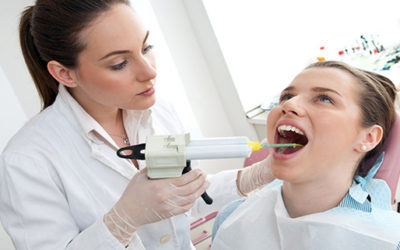When was the last time you paid a visit to a dentist? You must know that six-monthly dental checkups are essential to maintain your dental health. Dental cleaning session is a part of your dental checkups. It is a simple and painless process, and there is nothing to fear about. During a routine dental visit, you will undergo cleaning and examination of your teeth and gums to ensure you are free of dental problems. But, what exactly happens during a standard cleaning session?
1.Physical Exam
Before the actual cleaning process starts, the dental hygienist performs a thorough examination of your teeth. They evaluate your gum health and checks if there are any broken, chipped, or decayed teeth with the help of a small mirror and an X-ray. The dental hygienist may call the dentist for further proceedings.
2. Removal of plaque and tartar
With the help of a scaler, your dental hygienist cleans the plaque and tartar placed around your gum line and between your teeth. The more amount of plaque and tartar in your mouth, the more time it will need to clean a particular spot. Regular brushing and flossing stop plaque from building up and hardening into tartar.
3. Toothpaste cleaning
After your teeth are entirely tartar-free, your hygienist brushes your teeth with a high powered electric brush. During the dental cleaning sessions, the hygienist uses toothpastes that have a gritty consistency that gently scrub your teeth. Toothpaste cleaning, also known as polishing of teeth, is recommended to be done twice a year.
4. Flossing and Rinsing
When plaque and tartar grow along the gum line, there is an increased chance of gum infection. Inflammation of gums, red and bleeding gums, swelling and tenderness, are some signs of gum problems. Professional dental cleaning includes flossing and rinsing to help prevent gum problems and related oral health issues.
5. Fluoride treatment
This is the last step of a dental cleaning process. Fluoride is used as a protectant for your teeth to fight against cavities for several months. Your dental hygienist places a foamy fluoride gel onto your teeth with a small brush for one minute. The best thing about fluoride treatment is that you can eat and drink immediately after this treatment.
Based on what your dentist or dental hygienist examines in your mouth, they might perform other exams during your dental visit. In the case of children, a dentist may recommend molar sealants to prevent cavities in hard to brush areas. Dental cleanings are painless and are usually over in less than an hour. By understanding what happens during a standard dental cleaning session, you will be more aware of, as well as detect and treat any potential dental problems, through regular dental checkups.



